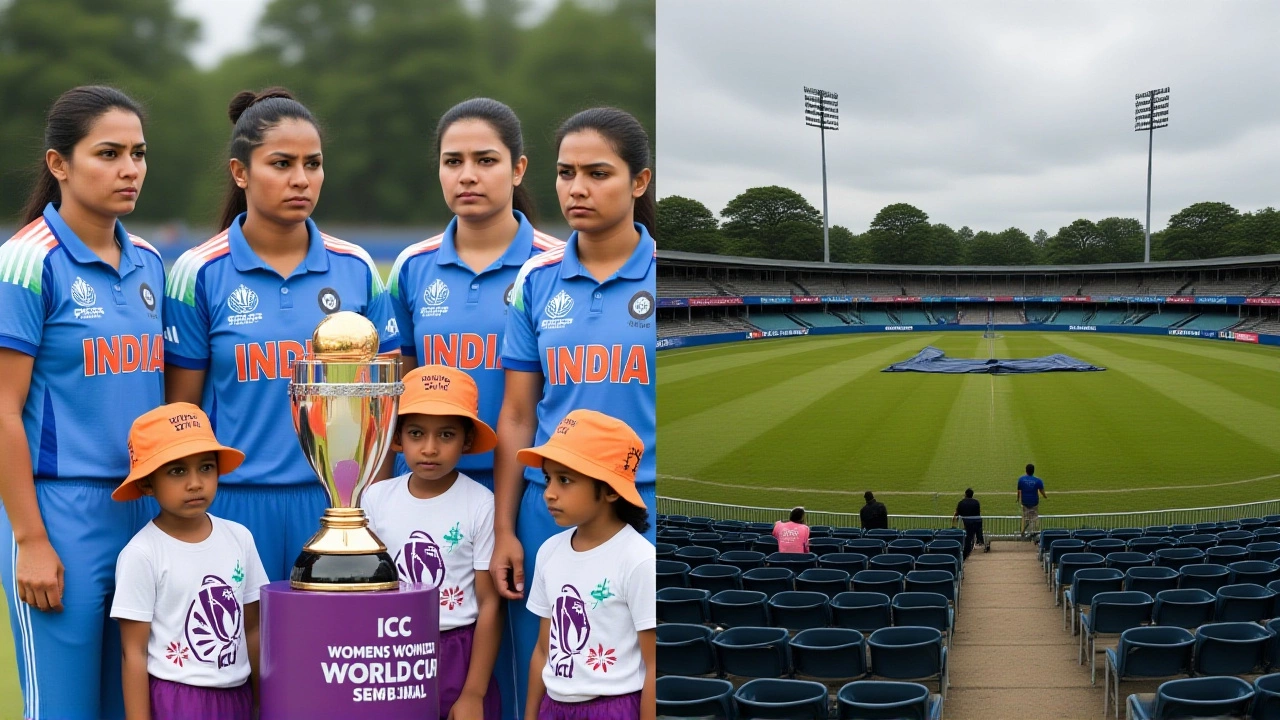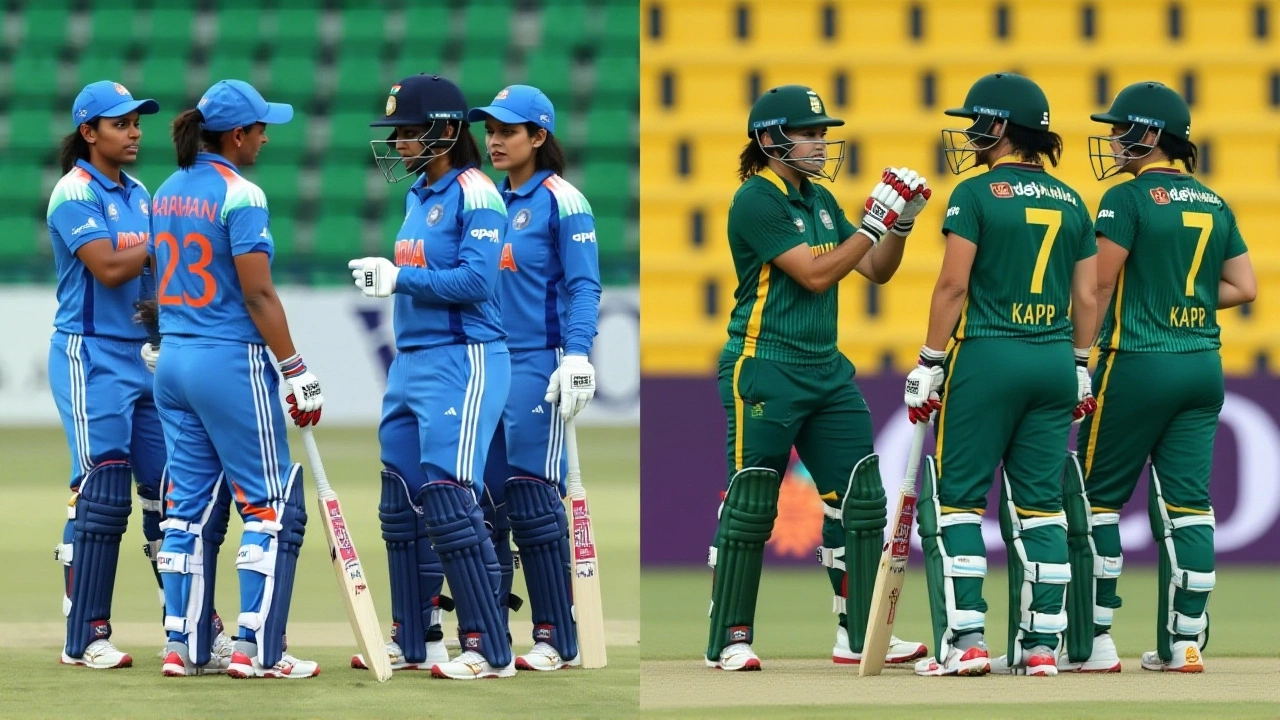India vs Australia Women's World Cup 2025 Semi: Rain, Records, and a Historic Shot at Glory
 Oct, 30 2025
Oct, 30 2025
On a sweltering Thursday afternoon in Navi Mumbai, India Women face their toughest challenge yet: toppling the invincible Australia Women in the Women's Cricket World Cup 2025 semifinalDY Patil Stadium at 3:00 PM IST. It’s not just about advancing to the final—it’s about rewriting history. Australia, unbeaten in 15 World Cup matches since 2017 and seven-time champions, enter as overwhelming favorites. India, battered by three straight losses, are underdogs with a spark: Smriti Mandhana’s 365 runs, a shattered psyche, and a weather system that might just hand them a lifeline.
When the Pitch Meets the Sky
The forecast is a nightmare. The DY Patil Stadium sits under a haze of 33°C heat, 60% humidity, and a 20% chance of rain at kickoff, according to The Times of India. But here’s the twist: if the match is washed out, the reserve day—Friday, October 31—is even worse. Times Now News reports an 86% probability of rain. That’s not a threat. That’s a death sentence for India’s hopes. Cricket doesn’t just pause for rain; it evaporates. And under International Cricket Council (ICC) rules, if the match is entirely abandoned on both days, Australia advances automatically. Why? Because they finished top of the league with 12 points. India? Fifth, with just 6. It’s a brutal reality: India must win on the field. No mercy from the clouds.Australia: The Machine That Never Stops
Australia’s dominance isn’t just statistical—it’s psychological. They’ve won every World Cup since 1978. Seven titles. Six wins in this tournament. One washout. And they nearly collapsed against Pakistan, falling to 76-7, only to storm back and win. That’s not luck. That’s resilience forged in pressure. Captain Alyssa Healy, 34, is back from a calf strain, having smashed 294 runs in four innings, including a 139 against Sri Lanka. Her presence alone shifts momentum. Leg-spinner Alana Michelle King, 30, put it bluntly: “You’re not just playing the XI on the field—you’re playing their whole nation.” That’s the weight India carries. Australia doesn’t just play cricket. They play with the confidence of a dynasty.India’s Grit in the Gritty
India’s journey to this semifinal was a rollercoaster of heartbreak. Losses to New Zealand in Delhi, Bangladesh in Lucknow, and that devastating 330-run chase in Bengaluru on October 15—where Australia chased down their total with ease—left fans shell-shocked. Yet, here they are. Why? Because of Smriti Mandhana, 28. She’s the tournament’s top run-scorer with 365 runs at 52.14, including a blistering 114* against England in Mumbai. She’s the only reason India’s batting doesn’t look like a sinking ship. But she’s not alone. The unexpected inclusion of 21-year-old Shafali Verma—replacing injured all-rounder Pratika Rawal—adds raw aggression. Can she handle Australia’s pace? Can she stay not out long enough to turn the tide? No one knows. But her presence changes the equation.Legacy on the Line
Former captain Mithali Dorai Raj, 42, didn’t sugarcoat it. “It’s a possibility to beat this side,” she told ESPNcricinfo. That’s not hope. That’s defiance. India has reached four semifinals since 2000—2000, 2005, 2017, 2022. Each time, they fell short. In 2005 and 2017, they lost to Australia in the final. This is their fifth shot. And if they win, they don’t just go to the final—they break a 20-year curse. The Narendra Modi Stadium in Ahmedabad, where the final is set for November 3, could be their cathedral of redemption. But first, they must survive the weather, silence the ghosts of past defeats, and outplay a team that has never lost a World Cup knockout match in 15 years.
What Happens If It Rains?
The ICC’s tiebreaker is cold, logical, and brutal. If the match is washed out on both Thursday and Friday, Australia advances—not because they’re better on the day, but because they were better over six games. India’s six points from six matches? Doesn’t matter. Australia’s 12? Does. It’s the same rule that handed South Africa a semifinal spot after their win over England in Guwahati. But for India, it’s a gut punch. They’ve fought through injuries, criticism, and collapses. To be denied by a forecast feels cruel. The India Meteorological Department is monitoring hourly updates from Navi Mumbai. Every drop of rain matters. Every cloud shadows the dream.Final Countdown
The world watches. The stadium holds 55,000. Millions more are glued to screens across India, Australia, and beyond. This isn’t just a semifinal. It’s a collision of legacy and ambition. Australia seeks their eighth title. India seeks their first. The scoreboard may not reflect it, but the emotional stakes are higher than any run total. Mandhana will bat first, hoping to set a target. Healy will wait, ready to dismantle it. King will spin magic. Verma might explode. And above them all, the sky hangs heavy. If it stays dry, India has a chance. If it rains? They’ve already lost.Frequently Asked Questions
Can India still win if the match is washed out on Thursday?
No. If the match is washed out on Thursday, it moves to the reserve day—Friday, October 31. But if rain continues and no result is possible on Friday either, Australia advances automatically under ICC rules because they finished higher in the league stage (12 points vs. India’s 6). India must win on the field.
Why is Smriti Mandhana so crucial for India’s chances?
Mandhana is India’s only consistent batter in the tournament, scoring 365 runs in seven innings at an average of 52.14. Her 114* against England was the only century by an Indian woman this World Cup. Without her anchoring the innings, India’s batting collapses. Against Australia’s disciplined attack, she’s the only player who can turn a shaky start into a competitive total.
How does Australia’s 15-match unbeaten streak impact India’s mindset?
Australia’s streak includes wins over every top team, including two World Cup finals. For India, it’s not just about skill—it’s about mental barriers. Players like Mandhana and Verma have never beaten Australia in a World Cup knockout. That history weighs heavier than any stat. Breaking it requires not just skill, but a seismic shift in belief.
What role does Shafali Verma play in this match?
Shafali, 21, replaces injured all-rounder Pratika Rawal and brings explosive power to the top order. While her strike rate is high, her consistency is still developing. Against Australia’s aggressive bowling, she could either ignite a fast start or fall early. Her presence adds unpredictability—a weapon India needs to disrupt Australia’s rhythm.
Has any team ever beaten Australia in a World Cup knockout since 2017?
No. Since 2017, Australia has won every World Cup knockout match, including the 2022 final against England. Their last defeat in a World Cup knockout was in 2013, when they lost to England in the group stage. India’s last win over Australia in a World Cup knockout came in 2005, when they lost the final. Beating them now would be unprecedented.
Why is the DY Patil Stadium’s weather so unpredictable?
Located in Navi Mumbai, the stadium sits near the Arabian Sea and the Western Ghats, creating microclimates prone to sudden showers. October is the tail end of monsoon season, and humidity levels remain high. The India Meteorological Department’s hourly updates are critical—because in this tournament, the weather might decide the champion.